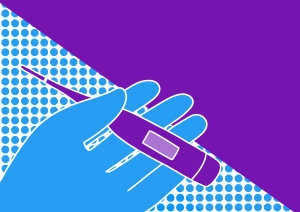Objectives
By the end of Family Medicine Clerkship, students will be able to:
1. Perform a focused history and physical exam to determine presence of fever, fever pattern, and associated sx & signs, so as to:
a. make a determination as to whether a patient truly has/has had a fever, and whether it is acute versus chronic.
b. identify patients with serious illness:
i. Demonstrate good understanding of the potential groups of cause of fever
ii. Infection, malignancy, drugs, environment (sun, heat)
iii. Important conditions not to miss: endocarditis, meningitis, septicemia
2. Recognize special groups where fever has different significance or impact (neonates, elderly patients, travel/immigrant issues, under-immunized groups, living conditions, cultural/religious groups, immune-compromised individuals).
3. Propose a plan for appropriate investigation of possible causes, based in the local context.
4. Propose a basic plan of management that includes:
a. Simple at home measures including antipyretics
b. guidance for patients/caregivers on how to access care depending on evolution of illness
5. Propose empiric therapy for the following conditions:
a. AOM
b. UTI/Pyelonephritis
c. Cellulitis
Clinical Cards
Microcases
https://cards.ucalgary.ca/deck/379
References
Recommended Resources Addressing the Objectives
Approach to the Adult Patient with Fever of Unknown Origin (6 pages) – excludes children and neonates (not pediatric)
Objectives covered: 1ab, 2 (partial), 3, 4 (partial, not a or b)
http://www.aafp.org/afp/2003/1201/p2223.html
Roth AR, Basello GM. Approach to the adult patient with fever of unknown origin. Am Fam Physician 2003 Dec 1;68(11):2223-2228.
PMID:14677667
Fever and antipyretic use in children (5 pages) – excludes neonates
Objectives covered: 2 (partial), 4ab
http://pediatrics.aappublications.org/content/127/3/580.full.pdf+html
Section on Clinical Pharmacology and Therapeutics, Committee on Drugs, Sullivan JE, Farrar HC. Fever and antipyretic use in children. Pediatrics 2011 Mar;127(3):580-587.
PMID:21357332
Fever in the Pediatric Patient (16 pages: very comprehensive, only read this to learn about approaching fever in the neonate – the rest is supplementary)
Objectives covered: 2 (partial), 5b
http://www.ncbi.nlm.nih.gov/pubmed/24176480
Wing R, Dor MR, McQuilkin PA. Fever in the pediatric patient. Emerg Med Clin North Am 2013 Nov;31(4):1073-1096.
PMID:24176480
Diagnosis and Treatment of AOM in Children (2008 update) (2 pages)
Objectives covered: 5a
http://www.topalbertadoctors.org/download/365/AOM_summary.pdf
Towards Optimized Practice (TOP). Diagnosis and Treatment of AOM in Children. 2008; Available at: http://www.topalbertadoctors.org/download/365/AOM_summary.pdf. Accessed June/2014, 2014.
No Pubmed ID
Urinary Tract Infections (12 pages: comprehensive approach to diagnosis and treatment of both upper and lower UTIs)
Objectives covered: 5b
http://www.ncbi.nlm.nih.gov/pubmed/23958364
Wang A, Nizran P, Malone MA, Riley T. Urinary tract infections. Prim Care 2013 Sep;40(3):687-706.
PMID:23958364
Cellulitis: diagnosis and management (10 pages: comprehensive, explains cellulitis well; presents topics important for understanding as well as treatment)
Objectives covered: 5c
http://www.ncbi.nlm.nih.gov/pubmed/21410612
Bailey E, Kroshinsky D. Cellulitis: diagnosis and management. Dermatol Ther 2011 Mar-Apr;24(2):229-239.
PMID:21410612
Foundational Knowledge
Page 2 of the “Fever and Antipyretic use in Children” article presents a concise, clinically-relevant summary of the physiology of fever)
Additional Resources
Top 10 causes of fever in family medicine, plus clinical pearls (1 page)
Objectives covered: 1b
http://www.ncbi.nlm.nih.gov/pubmed/17872819
Ponka D, Kirlew M. Top 10 differential diagnoses in family medicine: fever. Can Fam Physician 2007 Jul;53(7):1202.
PMID:17872819

